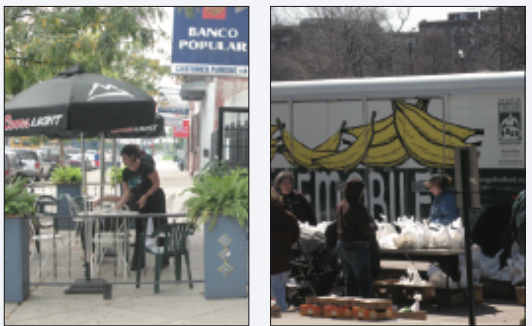Gabrielle Brodsky, a junior in anthropology, noted that when students first
came to the community, there was tension between students and members
of the community. “In some cases, there was this sense of ‘Who are these
people coming in to tell us about our community?.’” she says. “It was our job
to show community members that we were going to listen and pay close
attention to their perspective.” By observing, going to workshops in the
community and completing copious field notes about the community, she
learned that students had an important role in this process. “We got to
participate, create our own interview questions and do first-hand research,”
she says.

Brodsky and other students who took Hofman’s class last fall found
that community members were willing to talk about many critical issues
related to health. One of the lessons they learned is that “health” is
defined in a broader way. Health for these residents is not just about
exercise and eating, but is mental and spiritual in nature. It is also,
according to many who were interviewed, often something that is closely
tied to the community — not just an individual's health.
One recommendation of the students’ report calls for “all inclusive
health education for community residents of all ages.” Another finding,
was that many community members do not view organic food as being
"for them," but perhaps linked to gentrification and an increased
presence of more affluent white residents in the neighborhood.
Randall Jenson, a senior majoring in anthropology and women’s
studies, said he learned through the class that “You may be carrying
assumptions when you start doing this kind of research, but be conscious
that they are your own assumptions. The class was about addressing
issues in the community – and seeing the patterns our data showed.”
Jenson adds that being part of a research team during the 10-week course
was also a positive experience. “The class had a momentum about it,” he
says. “You throw the ball to everyone, and you can’t let it drop. If you were
absent, it was a big deal because everyone was needed.”
Hofman says this kind of project is geared to benefit the community but
can also impact students in a lasting way. “Students are empowered through
their participation by doing research that really matters,” says Hofman. “It’s
no longer just a class project. How many undergraduates get to do work that
can potentially impact social justice and public policy? It’s one thing for
students to read about a community. Here, they are face to face with it.”